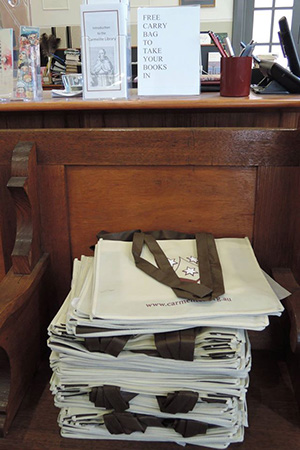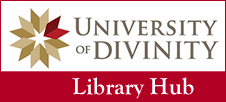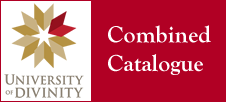Super User
Membership
 Membership to the Carmelite Library is open to ALL.
Membership to the Carmelite Library is open to ALL.
By becoming a member of our library, you gain exclusive access to a treasure trove of knowledge that will enrich both your mind and soul. You are welcome to sign up at any time!
Free membership is available to Carmelites, Lay Carmelites, and students and staff of the University of Divinity.
Staff and HDR students of the University of Divinity can borrow up to 25 items for 10 weeks.
Students and Carmelite members can borrow up to 20 items for 3 weeks.
External Membership Pricing:
Membership: $100 for 12 months or $50 for 6 months from day of joining.
Concession card holders: $50 for 12 months.
External members can borrow up to 10 items for 3 weeks.
Friends of the Library
We are dependent on public support to ensure the future of this unique resource. If you would like to consider becoming a Friend or Benefactor of the Library or leaving us a bequest, we would be delighted to provide you with further information. Donations are tax-deductible.
Newsletter
We have an occasional email newsletter advising on events in the Library.
If you wish to subscribe to our newsletter, please simply add your email address to the Mail Chimp tag at the left of the screen.
St Thérèse of Lisieux
Biographies include Monica Furlong, Thérèse of Lisieux, London: Virago, 1987, is a stimulating biography informed by feminist concerns; Guy Gaucher, The Story of a Life: St. Thérèse of Lisieux, San Francisco: Harper & Row, 1987, is an excellent brief introduction; Ida Görres, The Hidden Face: A Study of St Thérèse of Lisieux, London: Burns and Oates, 1959, is still one of the most profound studies; Patricia O’Connor, Thérèse of Lisieux: A Biography, Huntingdon, IN: Our Sunday Visitor, 1983.
There are many studies, often rather derivative. Among the best are: Conrad De Meester, With Empty Hands: The Message of Thérèse of Lisieux, Homebush, NSW: St. Paul Publications, 1982; and his larger The Power of Confidence: Genesis and Structure of the “Way of Spiritual Childhood” of Saint Thérèse of Lisieux, New York: Alba House, 1998, considered by the many the best available study of Thérèse’s doctrine. Guy Gaucher, The Passion of St. Thérèse of Lisieux, New York: Crossroad, 1990; and his The Spiritual Journey of Thérèse of Lisieux, London: Darton, Longman and Todd, 1987, are both fine studies, as is Christopher O’Donnell, Love in the Heart of the Church Dublin: Veritas, 1997.
St John of the Cross
The bibliography on John is also immense and multilingual. Marocchi (see above, 170-174) acutely surveys recent scholarship.
Crisogono de Jesús, The Life of St. John of the Cross, trans. Kathleen Pond, London: Longmans, 1958, is considered the classic biography, but the English version is now quite out-of-date. Outstanding for its thoroughness, incorporation of recent scholarship, and illustrations is God Speaks in the Night: The Life, Times, and Teaching of St. John of the Cross, Washington, DC: ICS Publications, 1991. Among other biographies, Richard P. Hardy, John of the Cross: Man and Mystic, Boston: Pauline, 2004, offers a refreshingly human portrait of the saint; Gerald Brenan’s St John of the Cross: His Life and Poetry, Cambridge: Cambridge University Press, 1973, is well-informed and readable; Robert Sencourt’s Carmelite and Poet: A Framed Portrait of St. John of the Cross, New York: Macmillan, 1944, pays particular attention to the writings; and Wilfrid McGreal’s John of the Cross, (Fount Christian Thinkers), London: Fount, 1996, briefly recounts the essentials.
Among studies of John’s spirituality Iain Matthew, The Impact of God: Soundings in St John of the Cross, London: Hodder and Stoughton, 1995, is an outstanding introduction; Rowan Williams’ chapter on John in The Wound of Knowledge: Christian Spirituality from the New Testament to St. John of the Cross, London: Darton, Longman and Todd, 1979, 159-179, is brief but well-focussed on central issues. Among other worthwhile studies are: Ross Collings, John of the Cross, (The Way of the Christian Mystics 10), Collegeville, MN: Liturgical Press, 1990; Alain Cugno, St. John of the Cross: Reflections on Mystical Experience, New York: Seabury, 1982; Eileen Lyddon, Door through Darkness: John of the Cross and Mysticism in Everyday Life, Hyde Park, NY: New City, 1995.
St Teresa of Avila
The bibliography on Teresa is immense, with important works in most major languages. An excellent brief survey of recent scholarship on Teresa (and on John of the Cross) is provided by Massimo Marocchi, “Spirituality in the Sixteenth Centuries”, in Catholicism in Early Modern History: A Guide to Research, ed. John W. O’Malley, St. Louis, MI: Center for Reformation Research, 1988, 163-192, esp. 166-169.
There is no outstanding biography of St Teresa. The most satisfactory in English is perhaps Stephen Clissold, St Teresa of Avila, New York: Seabury, 1982; also still of value is Marcelle Auclair, Saint Teresa of Avila, trans. Kathleen Pond, London: Burns Oates, 1953. Among the other better biographies are Tomás Alvarez and Fernando Domingo, Teresa of Avila: A Spiritual Adventure, Washington, DC: ICS Publications, 1982; Shirley Du Boulay, Teresa of Avila, London: Hodder and Stoughton, 1991; and Cathleen Medwick, Teresa of AVila: The Progress of a Soul, New York: Knopf, 1999.
Among the more important studies are Rowan Williams, Teresa of Avila, (Outstanding Christian Thinkers), London: Geoffrey Chapman, 1991; Alison Weber, Teresa of Avila and the Rhetoric of Femininity, Princeton, NJ: Princeton University Press, 1990; Thomas Dubay, Fire Within: St. Teresa of Avila, St. John of the Cross, and the Gospel, on Prayer, San Francisco: Ignatius Press, 1989; John Welch, Spiritual Pilgrims: Carl Jung and Teresa of Avila, New York: Paulist Press, 1982. E.W. Trueman Dicken, The Crucible of Love: A Study of the Mysticism of St. Teresa of Jesus and St. John of the Cross, New York: Sheed and Ward, 1963, though overschematic, remains important for the study of both authors. Fr Marie-Eugène’s two classic volumes I Want to See God, and I Am a Daughter of the Church: A Practical Synthesis of Carmelite Spirituality, Notre Dame, IN: Fides, 1953, 1955, provide a systematic synthesis.
Rule of St Albert
Recent years have seen important studies of the Carmelite Rule (1206/14). In English the most significant works are the essays in Albert’s Way: The First North American Congress on the Carmelite Rule, ed. Michael Mulhall, Rome: Institutum Carmelitanum, 1989; and Kees Waaijman’s The Mystical Space of Carmel: A Commentary on the Carmelite Rule, (Fiery Arrow Collection 1), Louvain: Peeters, 1999, which explores the mystical dimension of the Rule as a guide to personal and communal transformation.
Carmelite Spirituality
There are a number of good introductions of Carmelite spirituality, most organised historically and biographically. John Welch, The Carmelite Way: An Ancient Path for Today’s Pilgrim, New York: Paulist Press, 1996, is the most thoughtful; Wilfrid McGreal, At the Fountain of Elijah: The Carmelite Tradition, (Traditions of Christian Spirituality Series), gives an introductory overview; Paul-Marie de la Croix, Carmelite Spirituality in the Teresian Tradition, trans. Kathryn Sullivan, ed. Steven Payne, Washington, DC: ICS Publications, 1997, is a slightly revised version of an article first published in 1953; Peter Slattery, The Springs of Carmel: An Introduction to Carmelite Spirituality, New York: Alba House, 1991, is a basic survey; Titus Brandsma, Carmelite Mysticism: Historical Sketches, Chicago: Carmelite Press, 1936, is well-known but now rather dated (there were various subsequent editions, in England entitled The Beauty of Carmel); Elizabeth Obbard, To Live is to Pray: An Introduction to Carmelite Spirituality, Norwich: Canterbury Press, 1997, is more devotional in approach.
Among works which take a thematic rather than a biographical approach you should not underestimate François of Saint Mary, The Simple Steps to God, Wilkes-Barre, PN: Dimension, 1963, a brief and simple outline based on a profound knowledge of the sources. Redemptus Valabek’s Prayer Life in Carmel, Rome: Carmel in the World Paperbacks, 1982, while concerned specifically with prayer, offers a treatment of many authors not elsewhere discussed in English, with abundant quotation of texts. Segundo Galilea, The Future of Our Past: The Spanish Mystics Speak to Contemporary Spirituality, Notre Dame, IN: Ave Maria Press, 1985, seeks a contemporary synthesis. On a different scale is Fr Marie-Eugène’s two-volume classic I Want to See God, and I Am a Daughter of the Church: A Practical Synthesis of Carmelite Spirituality, Notre Dame, IN: Fides, 1953, 1955, based on the doctrine of St Teresa and St John of the Cross.
Carmelite History
The standard history of the Order in English is Joachim Smet, The Carmelites, 4 vols. in 5, Darien, IL: Carmelite Spiritual Center, 1975-1988; a revised ed. of vol. 1 was published in 1988. However, Smet no longer follows the history of the Discalced Carmelites after their separation from the parent order in 1593, for which it is necessary to refer to Peter-Thomas Rohrbach, Journey to Carith: The Story of the Carmelite Order, Garden City, NY: Doubleday, 1966 (reprinted Washington, ICS, 2001); however, it is not always entirely reliable and for the early period has been entirely superseded by subsequent research).
Gabriel Barry, Historical Notes on the Carmelite Order from its Beginnings until the Death of St. Teresa of Avila, Darlington: Darlington Carmel, [1980?] is a good brief introductory history for the early period, popular in approach but attentive to the critical problems of the sources. There are many accounts of the turbulent period of the Discalced Reform, some still marked by polemical positions.
Special Projects
Bibliographical Heritage of Religious Institutes
For generations Catholic religious congregations of priests, brothers and nuns have played an important part in the cultural, educational, spiritual and social life of the entire Australian community, in areas as diverse as education, social welfare, health care, and overseas aid. Today many of these congregations are in decline and experiencing changes which, among other consequences, are having a drastic impact on the nation’s bibliographical heritage. Many communities have relocated from large institutions to smaller and more domestic housing, and already many unique and long-established libraries have been lost or irretrievably dispersed.
Through our project “Bibliographical Heritage of Religious Institutes" the Carmelite Library is making an urgent effort to provide a repository for books representing the historic traditions of religious congregations. We are convinced that these are of significance not only for their theological and religious content, but also from many other perspectives of broad interest in the community: for example, the history of education, of women and of children, and the sociology of particular spiritual, cultural, and religious outlooks and customs.
Inter-faith dialogue
No peace among the nations without peace among the religions. No peace among religions without dialogue between the religions. No dialogue between the religions without investigation of the foundations of the religions (Hans Küng).
Inter-faith dialogue has assumed a special importance in today’s world. We plan to offer the Library as a centre for religious dialogue, especially on the level of the spiritual search at the heart of all religions.
We hope, as funds allow, to build on our select holdings on the spiritual and mystical traditions of the world religions.








